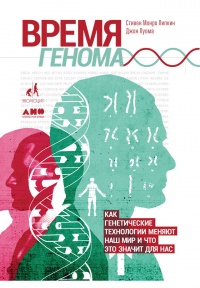Ознакомительная версия. Доступно 13 страниц из 63
resistance training and protein plus amino acid supplementation on muscle anabolism, mass, and strength. Amino Acids, 32(4), 467–477.
184
Hoffman, J. R., Ratamess, N. A., Tranchina, C. P., Rashti, S. L., Kang, J., & Faigenbaum, A. D. (2009). Effect of protein-supplement timing on strength, power, and body-composition changes in resistancetrained men. International journal of Sport Nutrition and Exercise Metabolism, 19(2), 172–185.
185
MacDougall, J. D., Gibala, M. J., Tarnopolsky, M. A., MacDonald, J. R., Interisano, S. A., & Yarasheski, K. E. (1995). The time course for elevated muscle protein synthesis following heavy resistance exercise. Canadian Journal of Applied Physiology, 20(4), 480–486.
186
Johnston, C. S., Day, C. S., & Swan, P. D. (2002). Postprandial thermogenesis is increased 100 % on a high-protein, low-fat diet versus a high-carbohydrate, low-fat diet in healthy, young women. Journal of the American College of Nutrition, 21(1), 55–61.
187
Antonio, J., Peacock, C. A., Ellerbroek, A., Fromhoff, B., & Silver, T. (2014). The effects of consuming a high protein diet (4.4 g/kg/d) on body composition in resistance-trained individuals. Journal of the International Society of Sports Nutrition, 11(1), 19.
188
Longland, T. M., Oikawa, S. Y., Mitchell, C. J., Devries, M. C., & Phillips, S. M. (2016). Higher compared with lower dietary protein during an energy deficit combined with intense exercise promotes greater lean mass gain and fat mass loss: a randomized trial. The American Journal of Clinical Nutrition, 103(3), 738–746.
189
Anton, S. D., Moehl, K., Donahoo, W. T., Marosi, K., Lee, S. A., Mainous III, A. G., …& Mattson, M. P. (2018). Flipping the metabolic switch: understanding and applying the health benefits of fasting. Obesity, 26(2), 254–268.
190
Howard, et al. (2006). Low-fat dietary pattern and weight change over 7 years: the Women’s Health Initiative Dietary Modification Trial. JAMA. Jan 4;295(1):39–49.
191
TODAY Study Group. (2010). Design of a family-based lifestyle intervention for youth with type 2 diabetes: the TODAY study. International Journal of Obesity (2005), 34(2), 217.
192
Thorpe, G. L. (1957). Treating overweight patients. Journal of the American Medical Association, 165(11), 1361–1365.
193
Pope, HG. Katz, DL. (1994). Psychiatric and Medical Effects of Anabolic-Androgenic Steroid Use: A Controlled Study of 160 Athletes. Arch Gen Psychiatry. 51(5):375–382.
194
Kail, RV. Cavanaugh, JC. (2010). Human Development: A Lifespan View (5th ed.). Cengage Learning. p. 296.
195
Kouri, E. M., Pope, J. H., Katz, D. L., & Oliva, P. (1995). Fat-free mass index in users and nonusers of anabolic-androgenic steroids. Clinical journal of sport medicine: official Journal of the Canadian Academy of Sport Medicine, 5(4), 223–228.
196
Burns, K. (2019, May 15). Caster Semenya and the Twisted Politics of Testosterone. Retrieved from https://www.wired.com/story/caster-semenya-and-the-twisted-politics-of-testosterone/
197
W. E. Buckley, C. E. Yesalis, 3rd, K. E. Friedl, W. A. Anderson, A. L. Streit, J. E. Wright. JAMA. (1988) Estimated prevalence of anabolic steroid use among male high school seniors; 260(23): 3441–3445.Anabolic steroid use by male and female middle school students. Pediatrics. 101(5): E6.
198
Schuelke, M., Wagner, K. R., Stolz, L. E., Hübner, C., Riebel, T., Kömen, W., …& Lee, S. J. (2004). Myostatin mutation associated with gross muscle hypertrophy in a child. New England Journal of Medicine, 350(26), 2682–2688.
199
Barr, J. G., Veena, S. R., Kiran, K. N., Wills, A. K., Winder, N. R., Kehoe, S., …& Krishnaveni, G. V. (2010). The relationship of birth weight, muscle size at birth and post-natal growth to grip strength in 9-year-old Indian children: findings from the Mysore Parthenon study. Journal of Developmental Origins of Health and Disease, 1(5), 329–337.
200
Sewell, D., Griffin, M., & Watkins, P. (2014). Sport and exercise science: An introduction. Routledge.
201
Ratamess, N. A. (2011). ACSM’s foundations of strength training and conditioning. Wolters Kluwer Health/Lippincott Williams & Wilkins.
202
Thomopoulos, S., Williams, G. R., Gimbel, J. A., Favata, M., & Soslowsky, L. J. (2003). Variation of biomechanical, structural, and compositional properties along the tendon to bone insertion site. Journal of Orthopaedic Research, 21(3), 413–419.
203
Wilson, A., & Lichtwark, G. (2011). The anatomical arrangement of muscle and tendon enhances limb versatility and locomotor performance. Philosophical Transactions of the Royal Society B: Biological Sciences, 366(1570), 1540–1553.
204
Dengel, D. R., Raymond, C. J., & Bosch, T. A. (2017). Assessment of muscle mass. Body Composition: Health and Performance in Exercise and Sport. Boca Raton, FL: Taylor & Francis Group.
205
Kamp, P. (2019, November 13). Body Fat Percentage Distribution for Men and Women in the United States. Retrieved February 3, 2020.
206
Laurson, K. R., Eisenmann, J. C., & Welk, G. J. (2011). Body fat percentile curves for US children and adolescents. American Journal of Preventive Medicine, 41(4), S87-S92.
207
Borrud, L. G., Flegal, K. M., Freedman, D. S., Li, Y., & Ogden, C. L. (2011). Smoothed percentage body fat percentiles for US children and adolescents, 1999–2004.
208
Costill, D. L., E. F. Coyle, W. F. Fink, G. R. Lesmes, and F. A. Witzmann. (1979). Adaptations in skeletal muscle following strength training. J. Appl. Physiol. 46(1): 96–99.
209
Tesch, P. A. and L. Larsson. (1982). Muscle hypertrophy in bodybuilders. Eur. J. Appl. Physiol. 49: 301–306.
210
Sola, O. M., D. L. Christensen, and A. W. Martin. (1973). Hypertrophy and
Ознакомительная версия. Доступно 13 страниц из 63
























